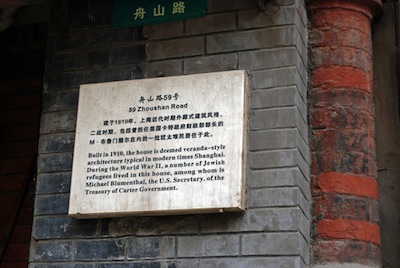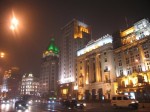Shanghai’s famous Bund district, where most of the buildings were built and owned by wealthy Sephardi Jewish families. (photo by Anthony Hartman via Wikimedia Commons)
It was a long trek: 6,000 miles by boat from central Europe to East Asia. But the towns of East Asia opened their gates for the waves of Jewish emigrants who had to find shelter from the tragic problems they faced first in Russia and, later, in Europe.
Though some believe their story still flies under the radar when compared to the prevalence of other Holocaust-related discourse – perhaps because most of Shanghai’s Jewish residents viewed their time in the city as a transient stage – historians now know there once was a large and thriving Jewish community in China. Records of immigrants kept by the Hebrew Immigrant Aid Society (HIAS), which operated in Asia from 1917-1950, paint an inescapable picture of Jewish refugees who survived the war in Shanghai.
“The United States, Canada, Australia closed the doors to Jews and other immigrants in the 1920s.… HIAS had to … find other places that were willing to allow Jewish refugees to live there,” explained Mark Hetfield, HIAS president and chief executive officer. “Desperate measures called for creative thinking.”

The first Jews, Silk Road traders, arrived in China in the eighth century and settled in Kaifeng. The next Jews were those who arrived under British protection following the First Opium War. Many of these Jews were of Indian or Iraqi origin, due to British colonialism in these regions, and they became the largest dealers in opium. These included David Sasson (the “Rothschild of the East”), philanthropic businessman Sir Eli (Eliazer) Khadori and real estate lord Silas Herdoon. According to most accounts, the number of Sephardi Jews in China totaled around 1,000.
Around 4,000 Jews would then arrive as refugees from the Russian Revolution of 1917. Finally, a surge as large as 18,000 Jews arrived as refugees from the Holocaust in the late 1930s and 1940s. According to Peter Nash, a child survivor from Berlin who found refuge in Shanghai from 1939-1949, about 8,000 of these refugees originated from Germany and about 4,000 came from Austria.
Read more at jns.org.

